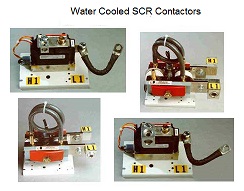If the resistance welding application is a high speed high power application requiring a lot of power, considerable cooling will be required. This is normally supplied by water systems in the form of city water, recirculated cooling towers or chillers. When cooling is critical due to unusual power and heat being generated attention must be taken to insure that:
Critical components are tested for adequate flow at the proper temperatures.
Water tubes are properly positioned
Chill block and all cooling channels are free of blockages
Chill blocks may need to have additional cooling channels
An upgrade from city or water tower to a chiller may be needed
Water flow meters should be installed and monitored on individual components
Yes, one could consider liquid nitrogen cooling. It is very cold, -195 deg C (-320 deg F). This extreme temperature is well below the 18-29 deg C (65-85 deg F) the AWS J1.2 recommended cooling temperature for a resistance welder.
Should one use liquid nitrogen cooling for resistance welding? Liquid nitrogen probably is not practical.


SCR's NEED FULL CONTACT WITH CHILL BLOCK TRANSFORMERS HAVE INTERNAL CHANNELS AND SURFACE CHILL BLOCKS
The extreme cold temperature differential likely would cause distortion in SCR chill blocks. The SCR must have full contact with the chill block for proper cooling.
The chill blocks and internal passages of a transformer have not been designed for sub zero cooling. Distortion and condensation are likely. Super cold temperatures can lead to condensation which is never good in the control or transformer.
Additionally special insulation would be necessary on the feed lines to maintain the temperature.
Cost of nitrogen versus water or chiller would be high.
Water/chiller based systems when set up properly, monitored and maintained can handle resistance welding applications. Liquid nitrogen is probably not practical for consideration as a cooling medium in resistance welding.
Reference: AWS J1.2:2016

